NOVEMBER 4, 2021: Today was a day of highs and lows, both literally and figuratively. Literally we went high – up to Saint George’s Castle at the top of the hill, to low at the Belem Tower on the Tagus river. Figuratively, we had highs – good times, and lows, when things went not so smoothly.
The day started with a trip to the grocery store. The closest store is about 600 meters away down the hill from our apartment. At 8:00 in the morning the streets are mostly empty, and the store windows are easy to see and enjoy. Several are already decorated for Christmas. We filled up with basic supplies and lots of fruits and vegetables.
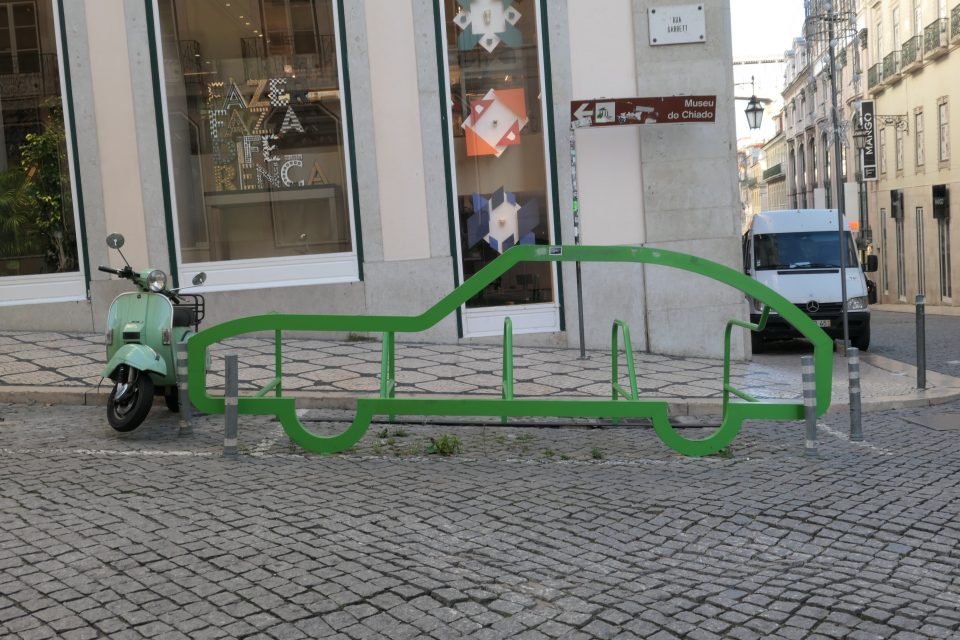
Parking place for bicycles shaped like a car 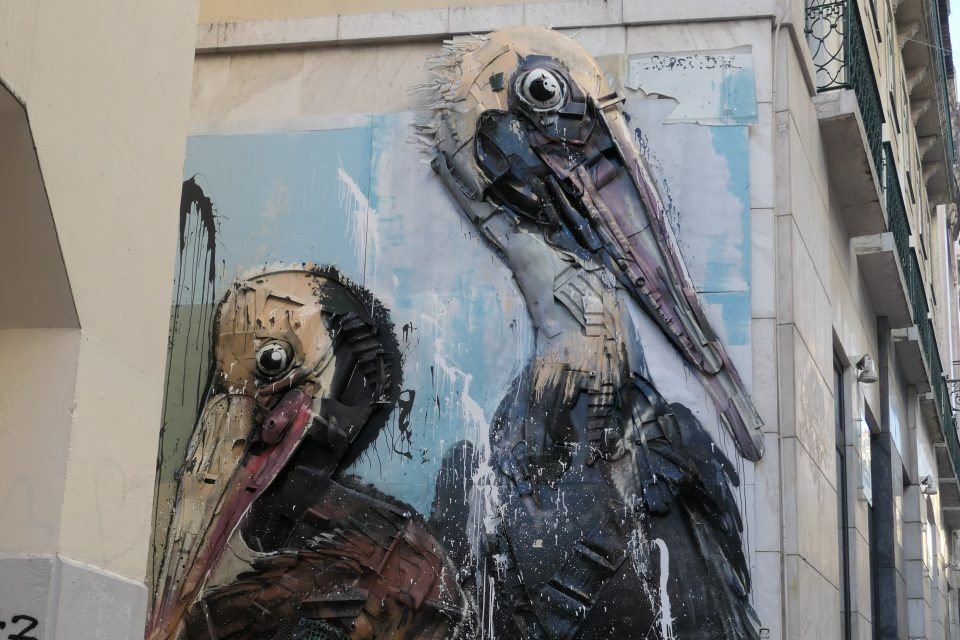
Street art 
Store window – dairies for kids 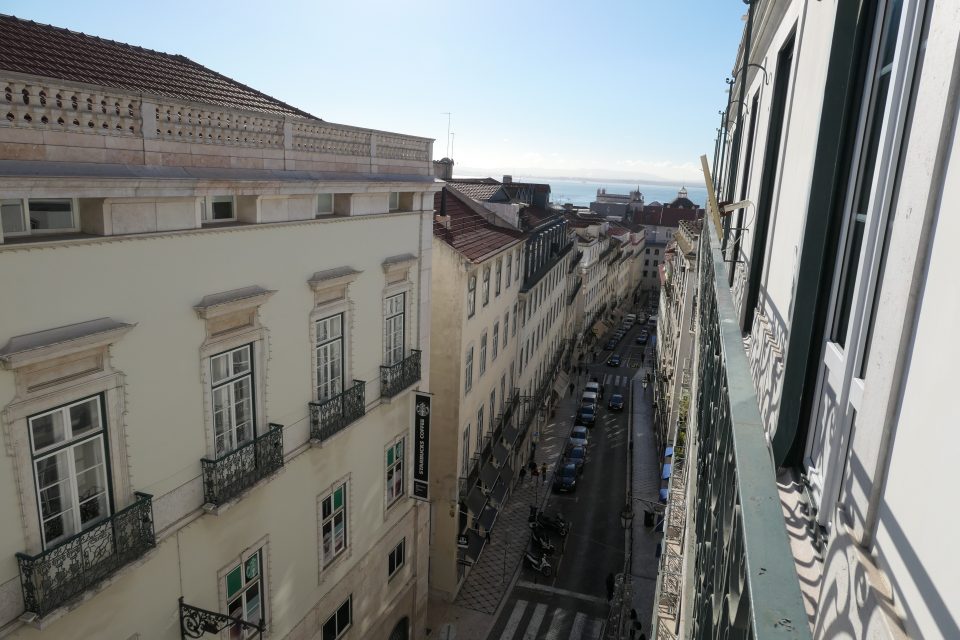
Morning view from our balcony
After putting away the groceries, we started our day. First stop was a tourist information bureau. I had misunderstood that in order to use the public transport system, you need a transportation card. We wanted to know where do you get such a card. We learned at tourist information, that usually you can purchase them at metro stations, but that today the metro was on strike. We were also told that our first destination, Belem Tower was under repair and cannot be visited inside. Not a great beginning.
We left the bureau and entered Commerce Square (Praça do Comércio). This is a huge open square, built on the site where the old Royal Palace used to exist before it was destroyed by the earthquake of 1755. One side of the square is open to the river Tagus. When the square was first built, the commercial ships would unload their goods directly onto this square, as it was considered the “door” to Lisbon.

Commerce Square 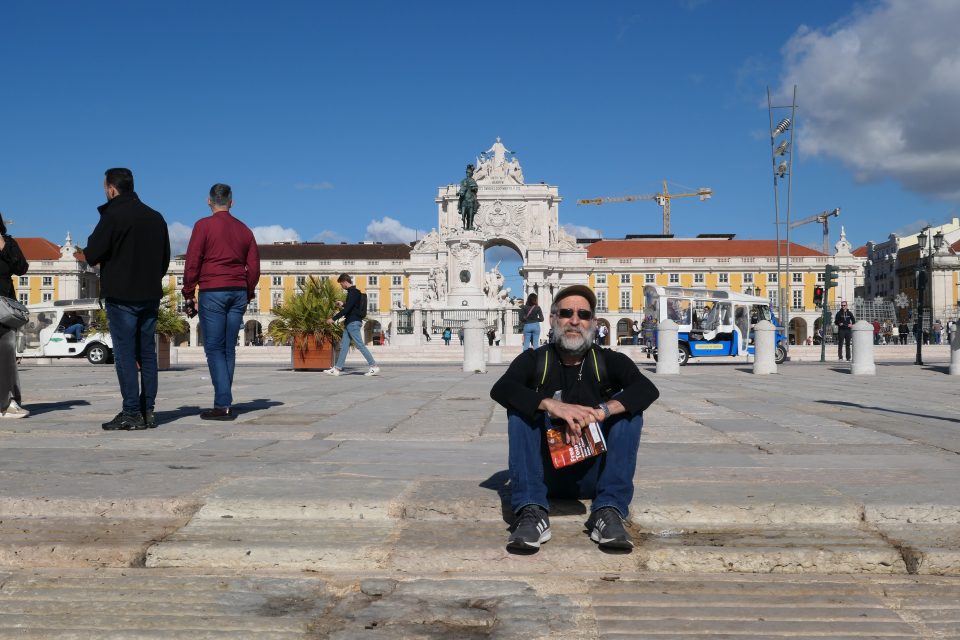
Sitting on the steps that lead to the river
We followed the instructions we had been given, but did not find a place to buy the transportation card. Frustrated, we decided to take an Uber to the Belem Tower, located about 20 minutes away. The Uber pick up point was one block over, at a bus stop. Once at the bus stop, we asked a local who was waiting for the bus, how to pay and learned you can pay the driver. We decided, if we are already at a bus stop and you can pay the driver, let’s try to take the bus. We waited and waited and when the bus finally arrived, it was packed so full that we could not get on. At that point, discouraged, we realized that we had just wasted an hour getting nowhere, we ordered an Uber. While waiting for the Uber, an empty bus showed up…
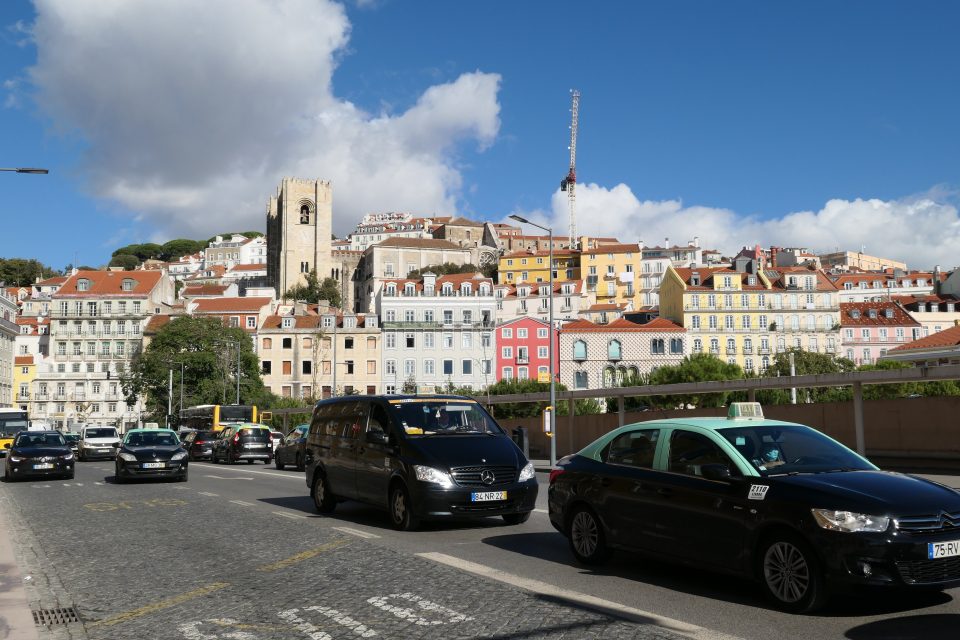
The view from the bus stop. Love the colors of the houses.
The Uber dropped us off next to the Belem tower (Torre de Belém). Although it is now off-season and there is still corona to worry about, the place was full of tourists. Languages from all over the world could be heard., Although entry to the tower was closed, you could still enjoy the beauty of the tower from the outside. The Belém Tower was built in the early 1500’s and used to defend the city. Years later, it was transformed into a lighthouse and customs house.

Belem tower (Torre de Belém). 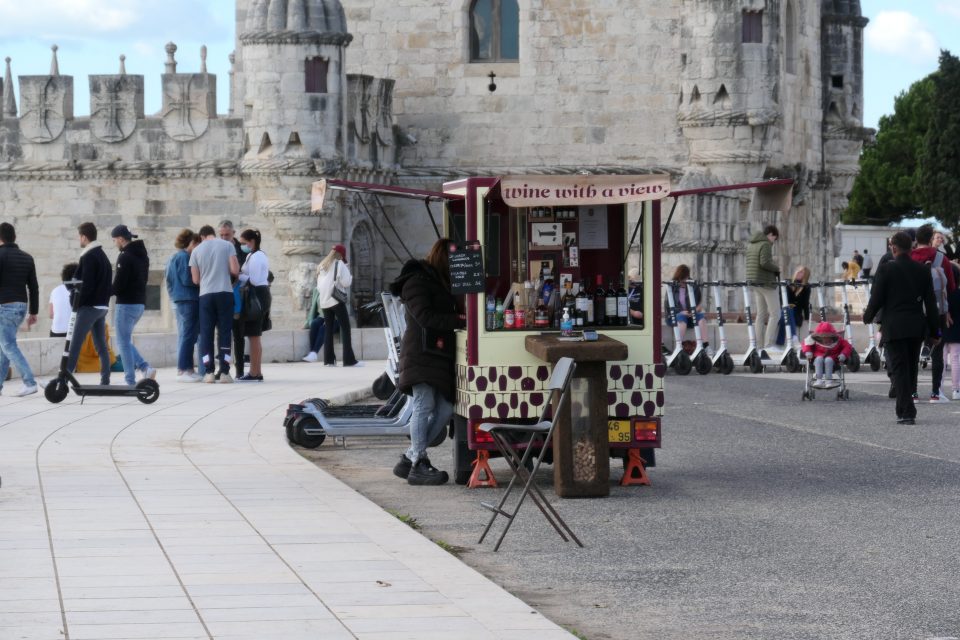
Wine with a view!
After seeing the tower, it was now time to verify our first Wandering Jew location in Lisbon. For several years now, since 2016, Lisbon has been committed to building a Jewish Museum – the TIKVA Museu Judaico Lisboa. It was originally scheduled to be in the Alfama section of the city. Alfama was one of the three Jewish quarters in Lisbon and building the museum there was a symbolic return. However, the local residents protested and placed an injunction on the project. In response, in 2019, the city moved the site of the museum to Belem, where a much larger, more substantial building could be constructed. We went to the site hoping to see something. All we saw was a large fenced in area that looked abandoned. Turns out that the architectural plans for the new site, done by famous architect Daniel Libeskind were only recently revealed. Daniel Libeskind has designed a number of similar museums, such as the Jewish Museums in Berlin, San Francisco and Copenhagen. He was also selected to be the master planner for the redevelopment of World Trade Center. Seems like it will be several more years before there will be a Jewish museum to visit in Lisbon.
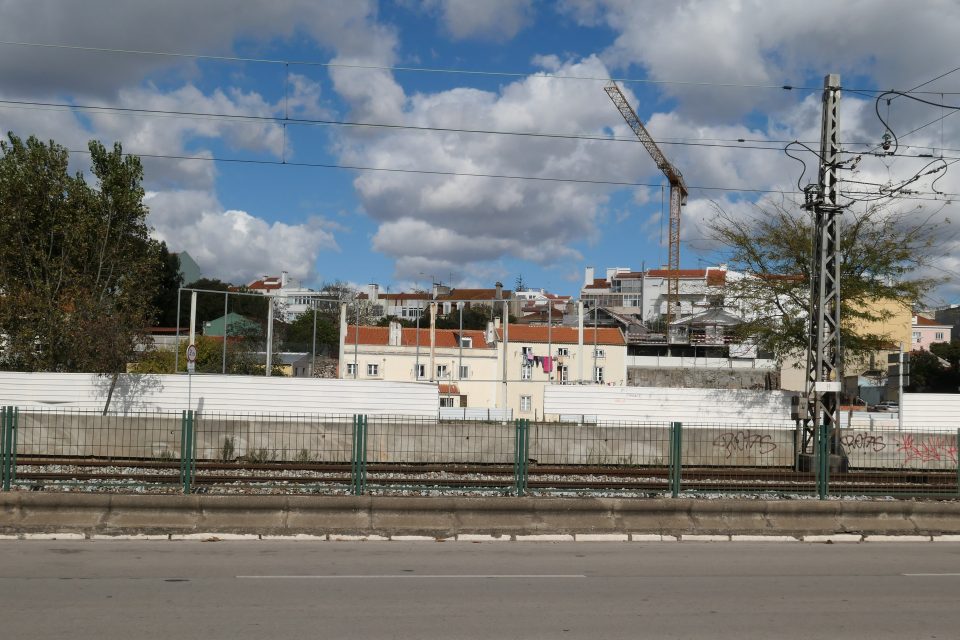
Future site of the Jewish Museum of Lisbon
From the site, we returned to the Belem Tower and walked along the riverfront to the Monument to the Discoveries. As you walk, you see three major landmarks. The first looks like San Francisco – the 25 de Abril bridge designed by the same person who designed the Golden Gate Bridge. The second looks like Rio de Janeiro – a large statue of Christ on the hill on the other side of the river. The third – the Monument to the Discoveries, uniquely Portuguese.
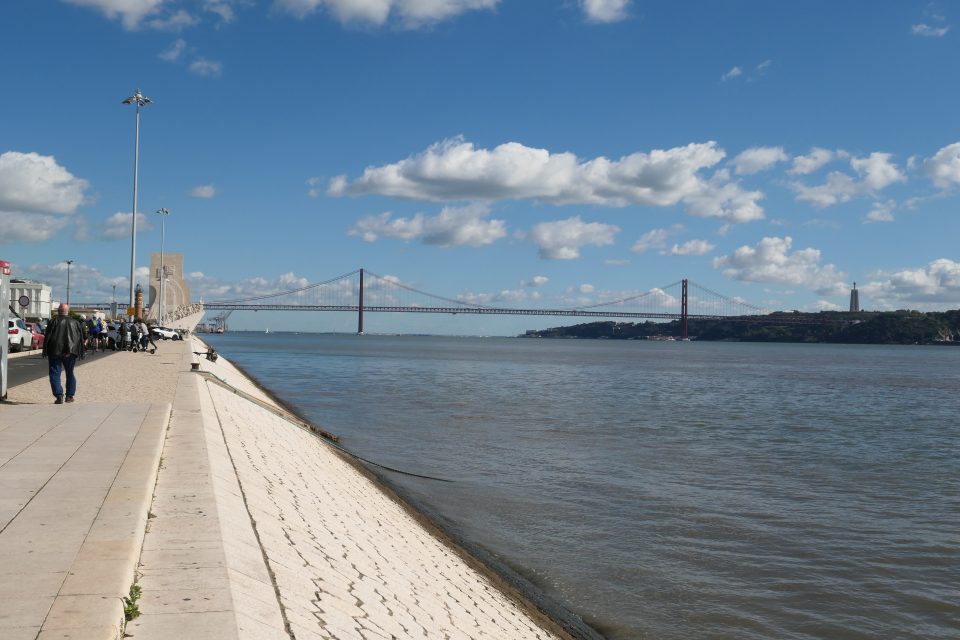
Monument to the Discoveries on the left, the 25 de Abril bridge in the middle, Christ statue on the right
The Monument to the Discoveries represents a sailing ship led by Prince Henry the Navigator, who is credited as being the initiator of the Age of Discovery and was responsible for colonizing the Azores, Madeira and Cape Verde for Portugal. Behind him on the monument are many other great Portuguese explorers.
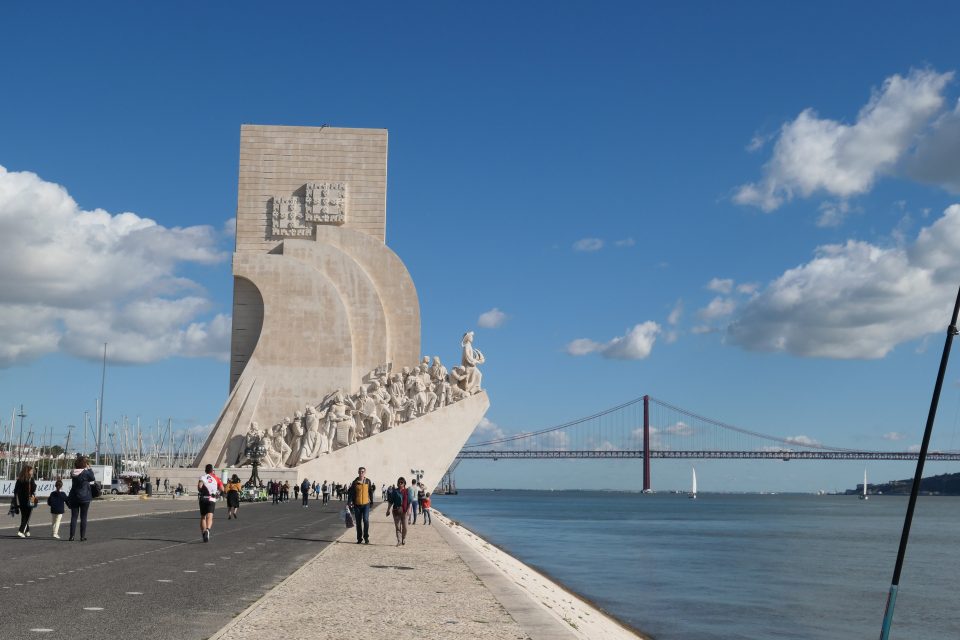
Monument to the Discoveries 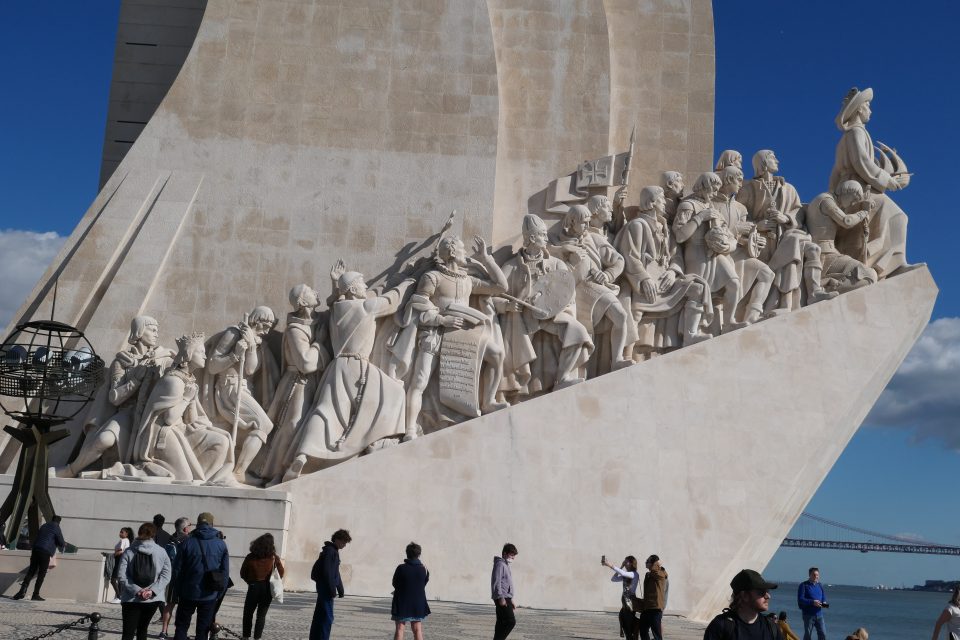
Prince Henry at the helm 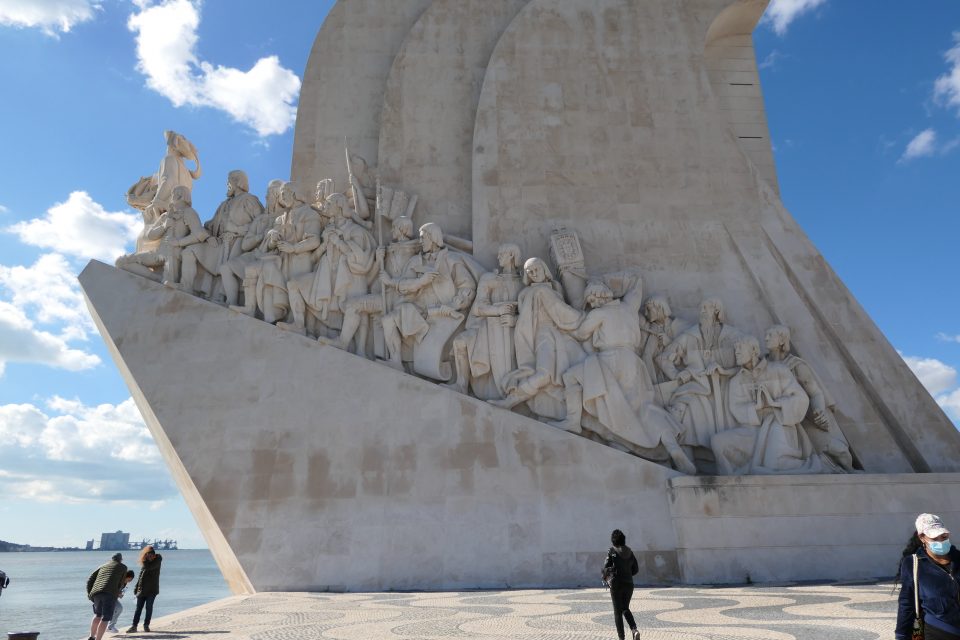
More explorers on the other side
Across the street from the monument is the Jerónimos Monastery. Inside lies the tomb of Vasco de Gama, another great Portuguese explorer who was the first European to reach India by sea. Although I heard the monastery interior is spectacular, husband Mark prefers not to enter churches, so we continued onward.
From the monastery, you can already see the line for the famous Pastéis de Belém. This bakery is the home of Pastel de Belem, which are considered to be the best Pasteis de Nate in Lisbon. In this bakery, they follow an ancient secret recipe from the monks of the Jerónimos Monastery and recreate the pastry by hand, using only traditional methods. In the 18th century, the monks used egg whites to starch their clothes and had many leftover egg yolks. From the yolks, they created the Pasteis de Nate – a flaky filo dough crust, with a sweet egg-yolk custard inside. Delicious!
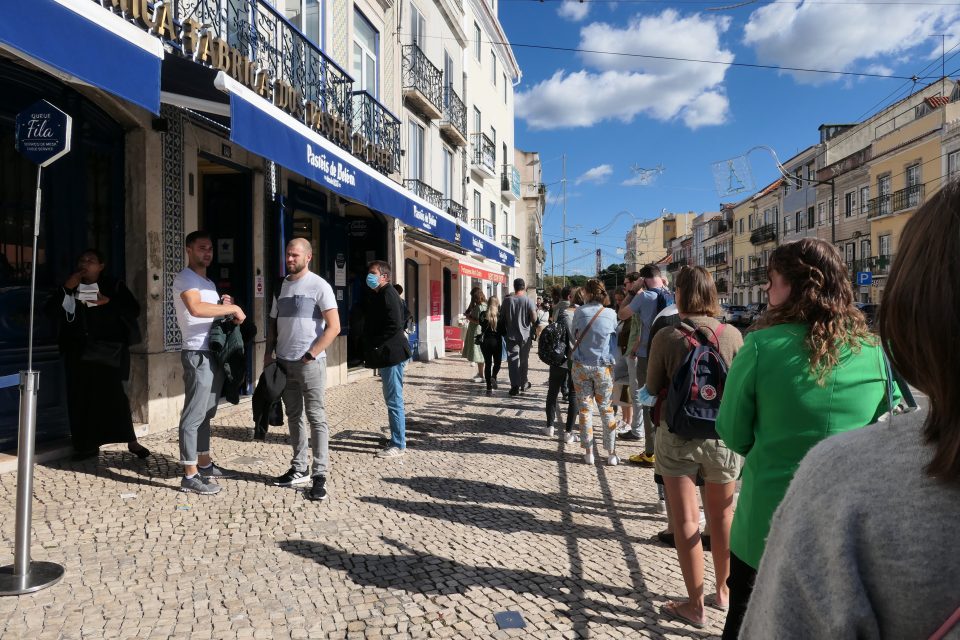
Waiting in line 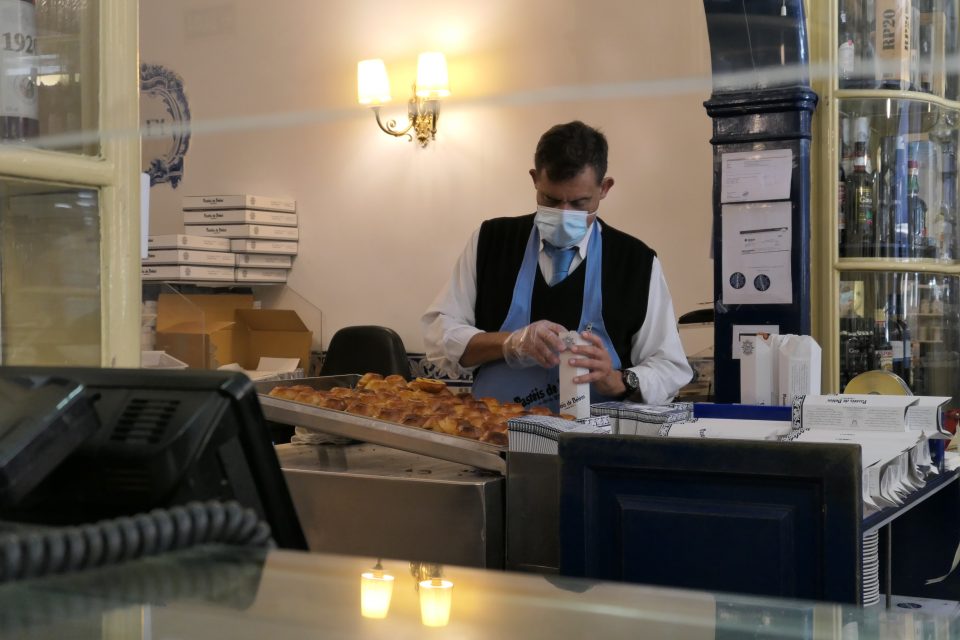
Inside the bakery packing the pastries 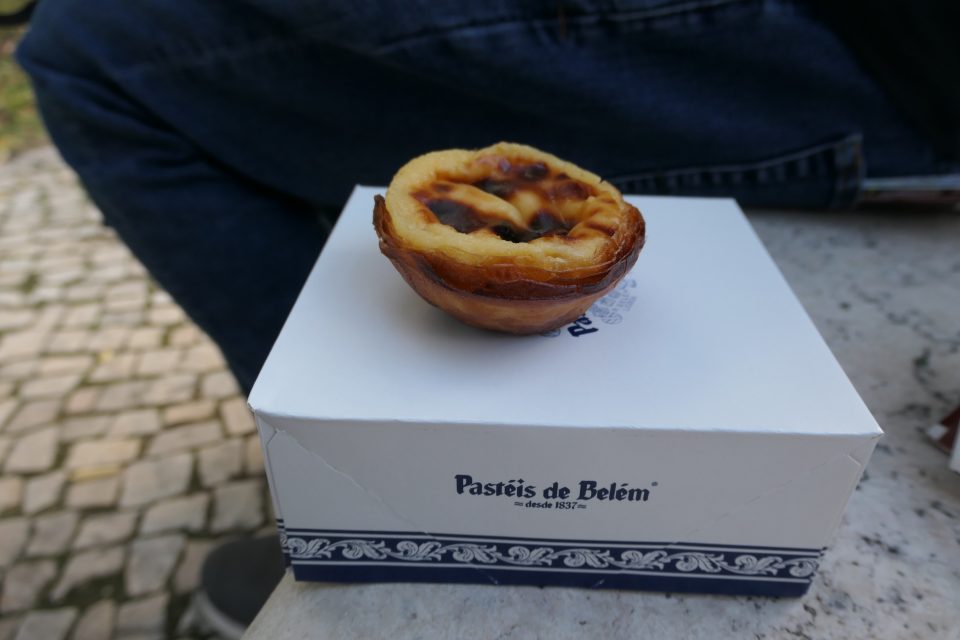
Pasteis de Nate
We then walked a couple of kilometers along the main road to our next Wandering Jew site – the statue of Garcia de Orta. We left the tourist area behind and were now in a truly local area. As we passed the street cafes, we heard Portuguese and saw the residents of the area. The buildings were pastel colored and tiled in many different patterns, typical of the streets of Lisbon.
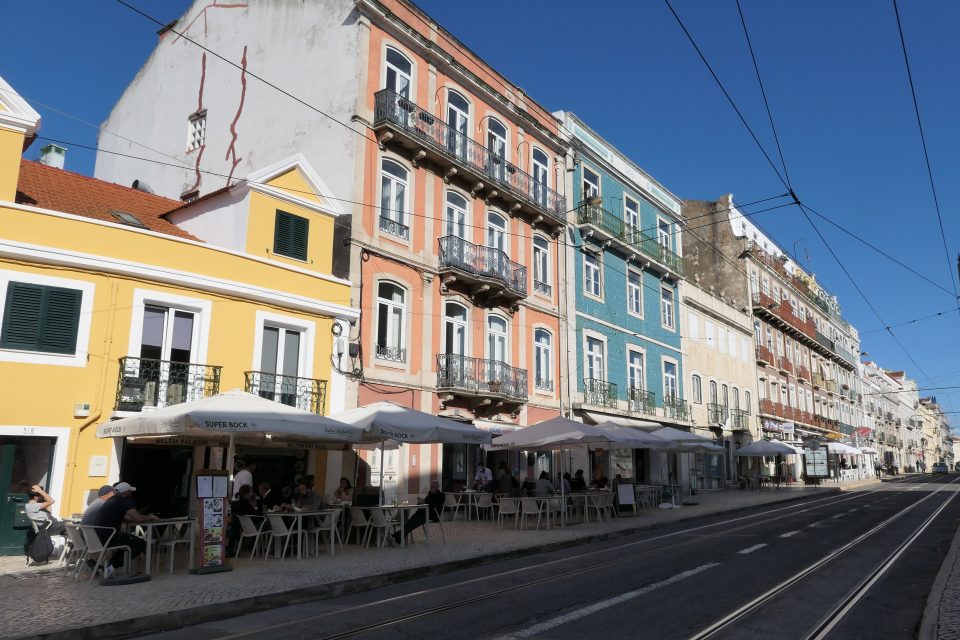
Typical street scene
About half an hour later, we reached our destination – the entrance to The Portuguese Institute of Hygiene and Tropical Medicine and immediately came upon the statue of Garcia de Orta. Garcia de Orta was born in 1501 in Castelo de Vide, Portugal to Jewish refugees from the Spain inquisition. He studied medicine and moved to Lisbon, where he eventually became physician to the king. Fearing prosecution from the Portuguese inquisition, in 1534 he made his way to Goa, India (then a Portuguese colony). In Goa, he wrote a book which became widely used in Europe as a standard reference text on medicinal plants. Garcia died in Goa in 1568. A year after his death, his sister, still living in Portugal, was summoned by the inquisition and confessed under torture to be a secret Jew. Based on her confession, Garcia de Orta was condemned post-mortem for the crime of Judaism, and his bones were dug up and burnt. Today memorials recognizing his contributions exist in both Portugal and India, and here was one of them.
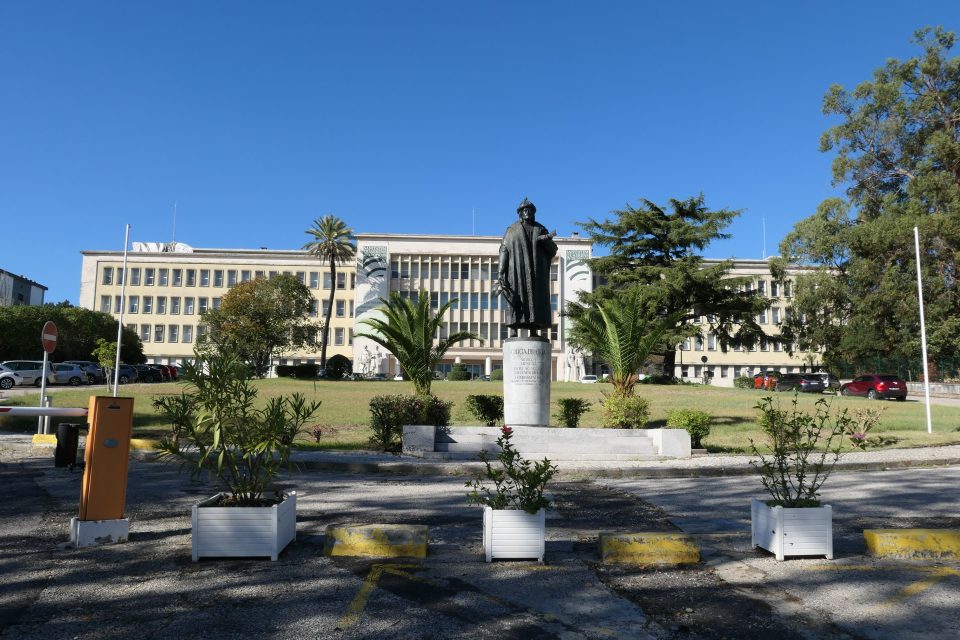
The entrance to The Portuguese Institute of Hygiene and Tropical Medicine and the statue of Garcia de Orta

Garcia de Orta 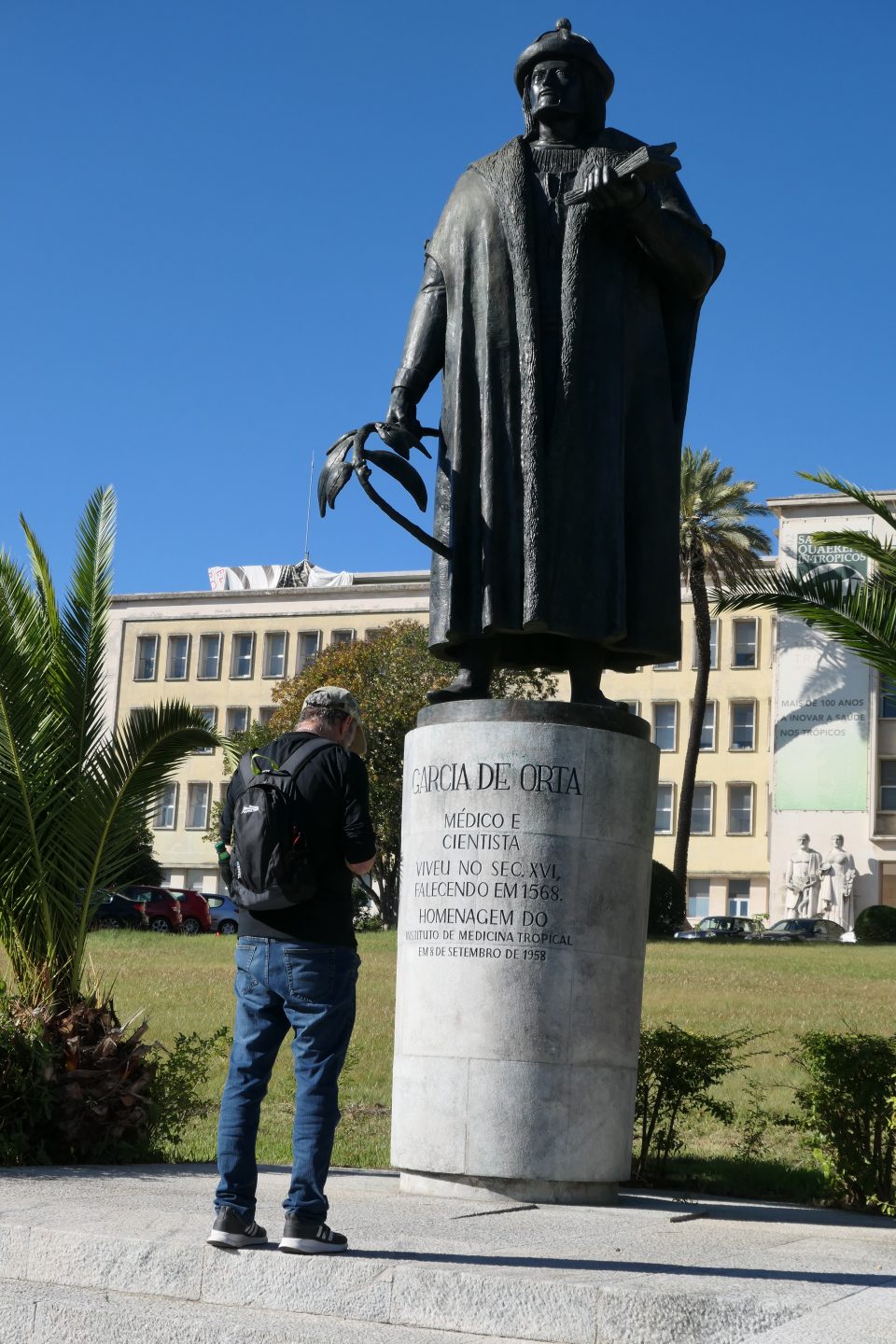
Mark verifying the GPS location of the statue
After verifying the location of the statue for our Wandering Jew app, we once again decided to try our luck on public transportation. There was a tram stop not far away. While waiting for the tram, a bus, with the same tram number arrived, and we got on. After one stop, everyone got off – we were at the end of the line at the parking garage for trams. Interesting. We then got on a tram (same number as before) that took us back to Commerce Square.
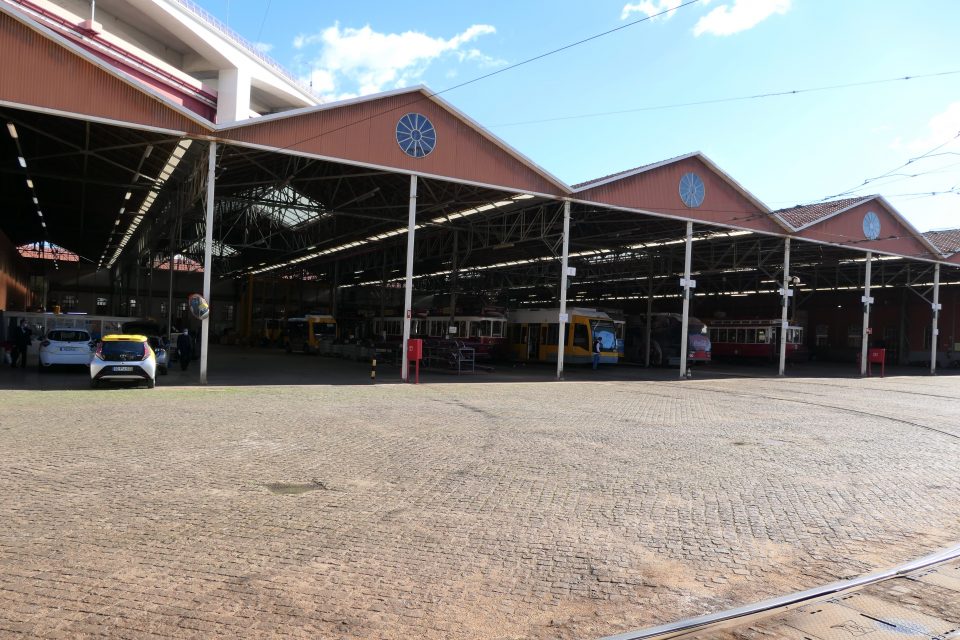
Parking garage for trams
Our next destination was Saint George’s Castle (Castelo de São Jorge). To get there we were going to take Tram 28, the most famous tram line in Lisbon. Tram 28 travels through the old city and is usually full of both tourists and locals. We waited a long time for the tram and once again, it arrived too full to take more passengers. However, we had learned our lesson – if a full tram comes, an empty one will soon follow. And so it was – we got on the next tram and were on our way to the castle. Luckily, at one stop, Mark asked me where to get off and I answered that I thought the castle was the last stop. A local heard me and said no – if you want to go to the castle, you need to get off here and go up those steps. We quickly got off the tram. Mark had asked the question at just the right moment, and the local person was nice to steer us in the right direction.
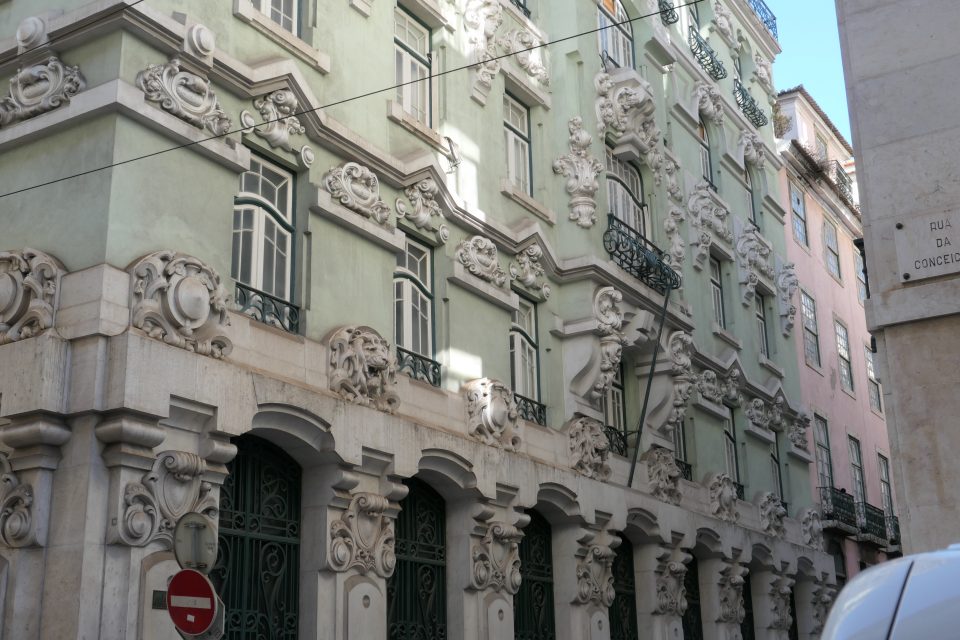
Admiring the house across the street while waiting for the tram 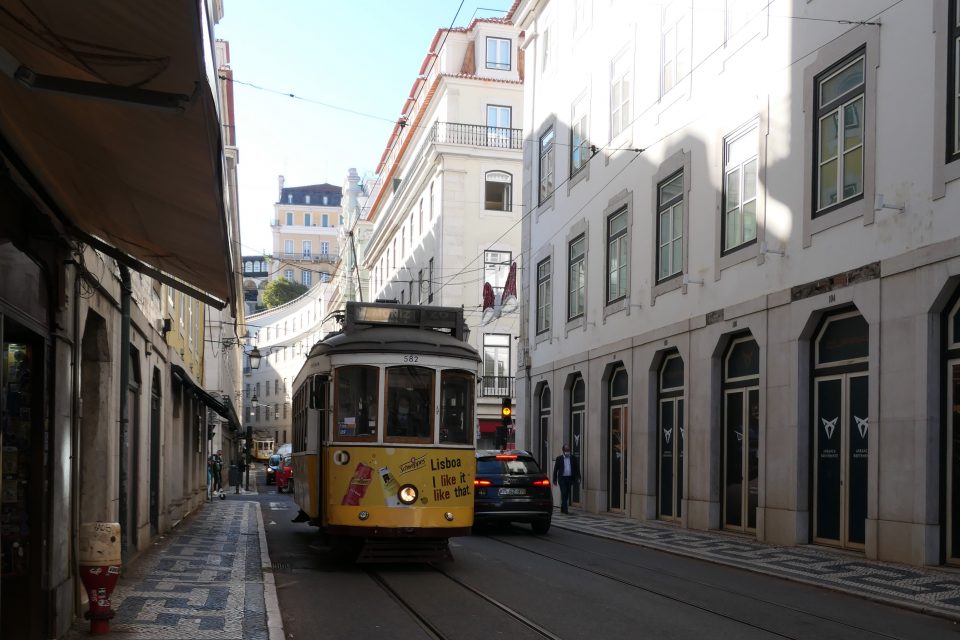
Tram 28 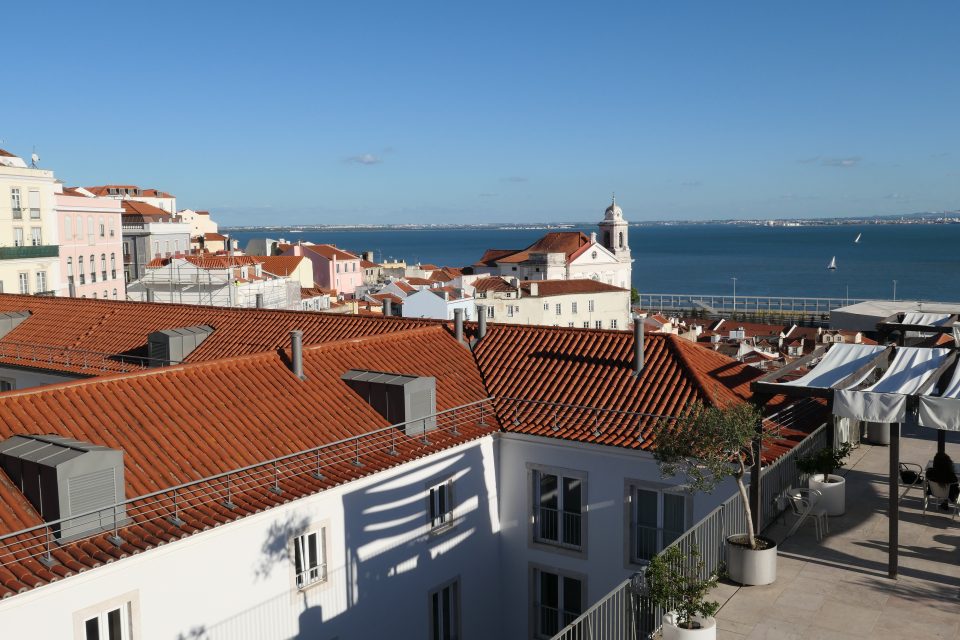
The view when we got off the tram
Saint George’s Castle sits on top of a hill and can be seen from almost anywhere in the city. The fortress was first built in the fifth century and enlarged and modified over the years. It offers beautiful overlooks over Lisbon in all directions.
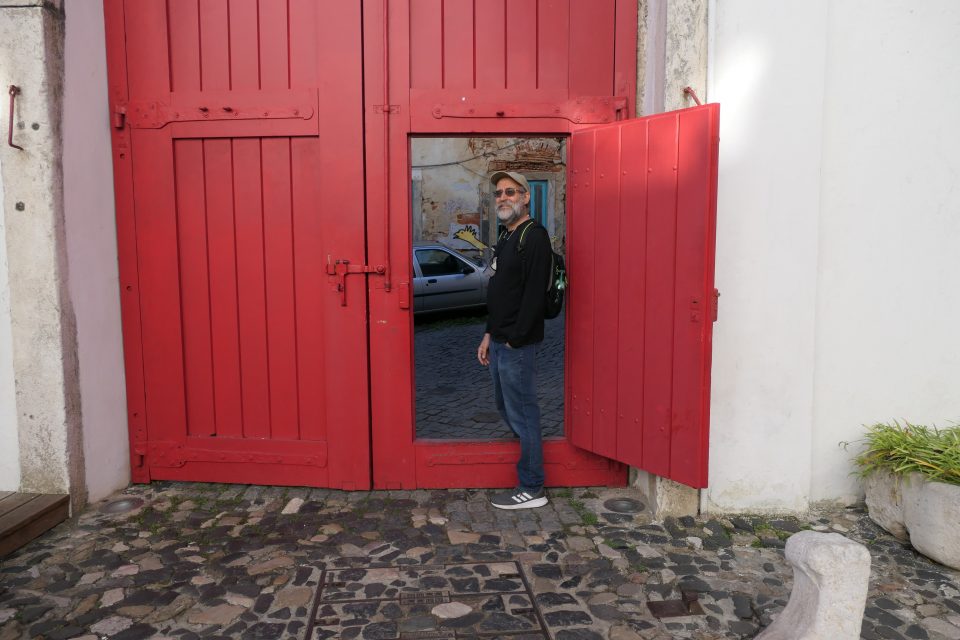
Making our way to the castle 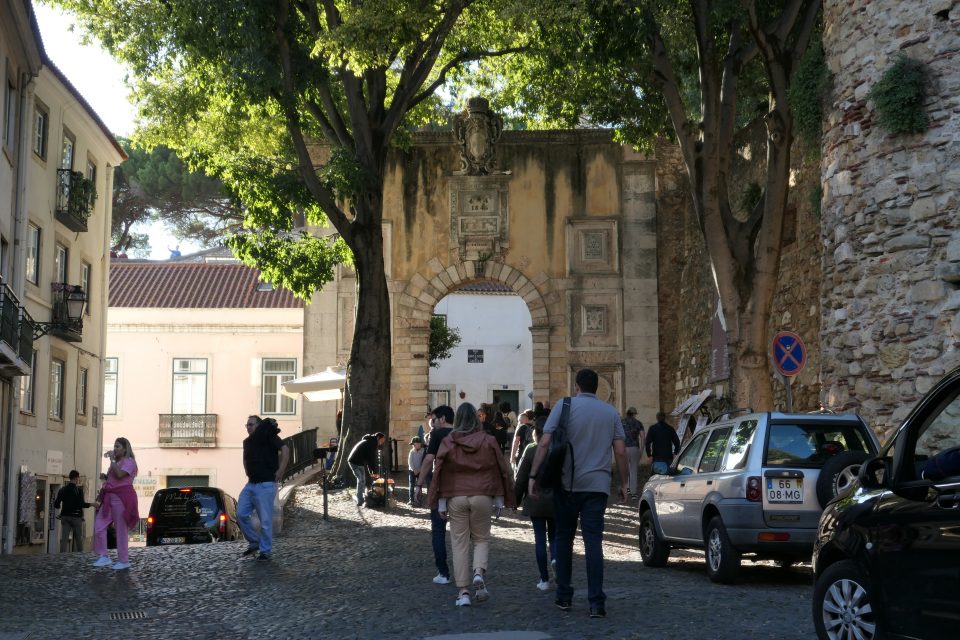
The entrance to Saint George’s Castle 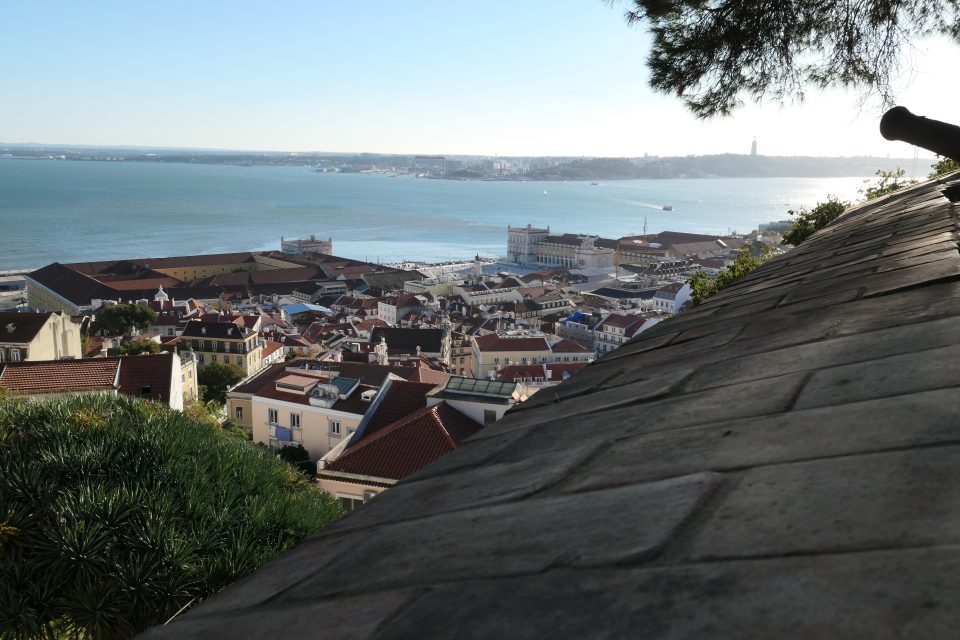
Views from the castle. Commerce Square below. Cannon on the right. 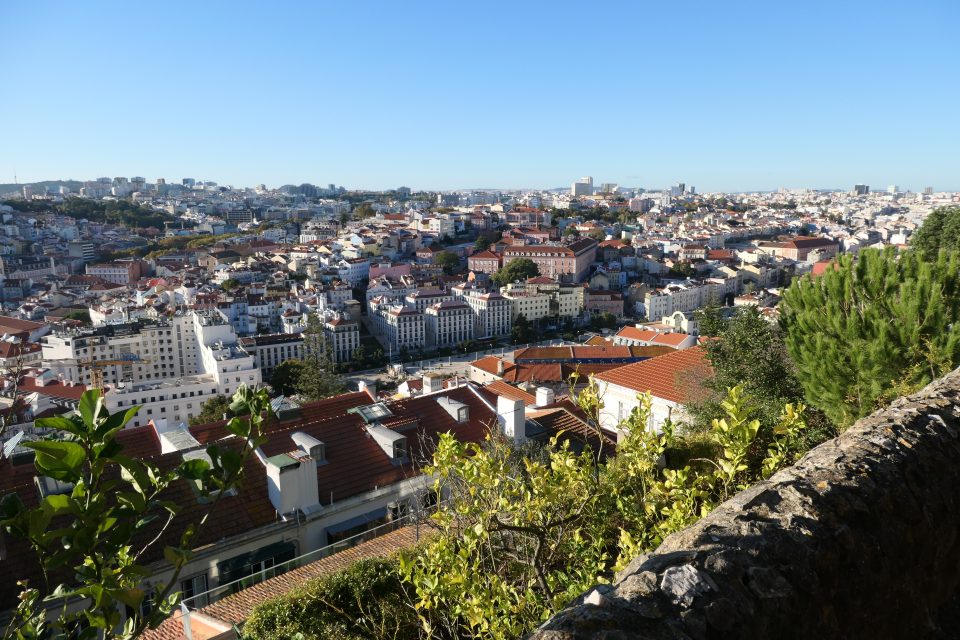
View to the north 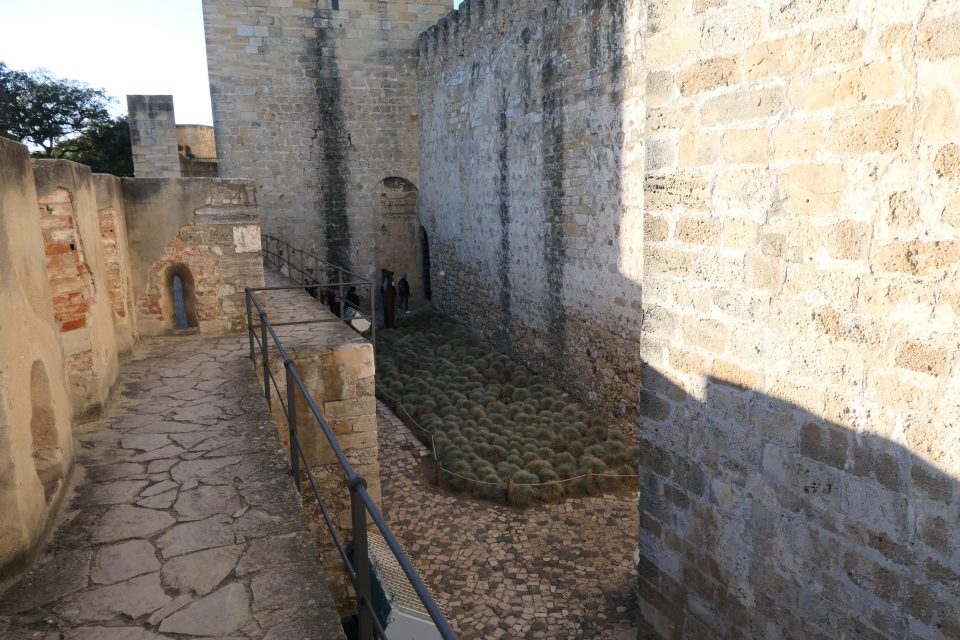
The castle grounds
The castle grounds today are also home to many peacocks. Just as we were leaving, we heard a thumping noise and saw a man rhythmically pounding a stick against a pail. He was surrounded by more than a dozen peacocks enjoying dinner. Not sure if the noise was a call for them to come get food, or a tactic to scare the pigeons to prevent them from eating the grains he had scattered for the peacocks. Either way it was interesting to see.
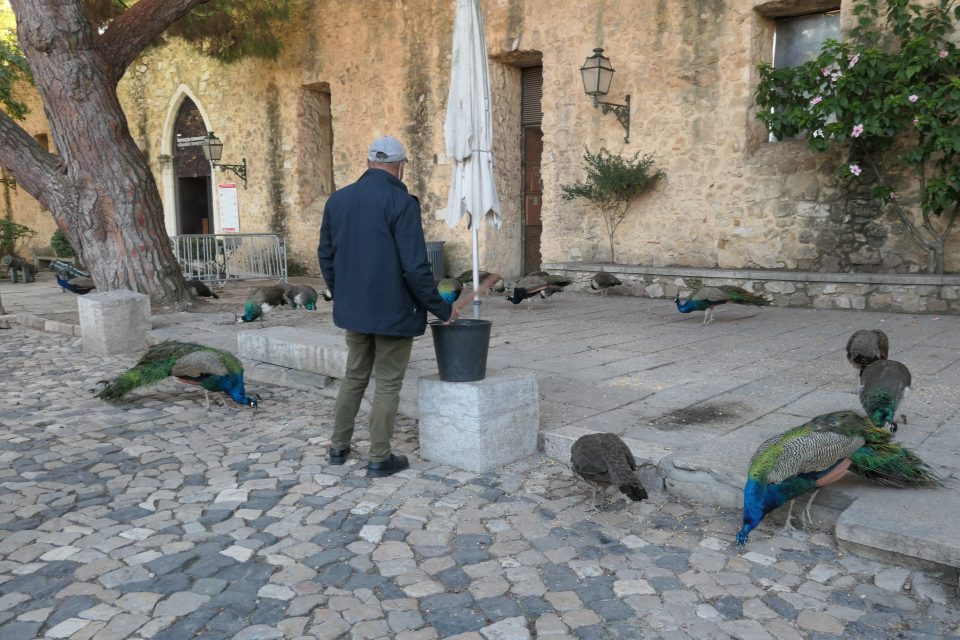
Feeding the peacocks
Back home in the apartment, we had dinner. We ate in because my leg had been really bothering me and by the end of the day, I was having lots of trouble walking. The knee would not bend. Definitely a low. Tomorrow I will use a hiking pole. Hopefully that will help.
Dinner was takeout from Kong, the restaurant that we were not able to get a seat at the night before. I had the vegan version of Polvo à Lagareiro- a Portuguese dish based on octopus, olive oil, potatoes, greens and garlic. Instead of octopus, they took huge mushrooms with large, thick stems, and sliced the stems lengthwise into eight octopus legs. Besides the mushrooms, the dish had small potatoes, and lots of onions and spinach. Really good. (So hungry – forgot to photograph).
Some things we learned today – you can pay for buses and trams as you take them, preferably with correct change but not essential. There are lots and lots of ice cream stores in Lisbon. Milk frequently comes in UTH packages, not fresh. Around every corner there seems to be a museum. Mornings are quiet times; middle of the night is not. More to learn tomorrow.
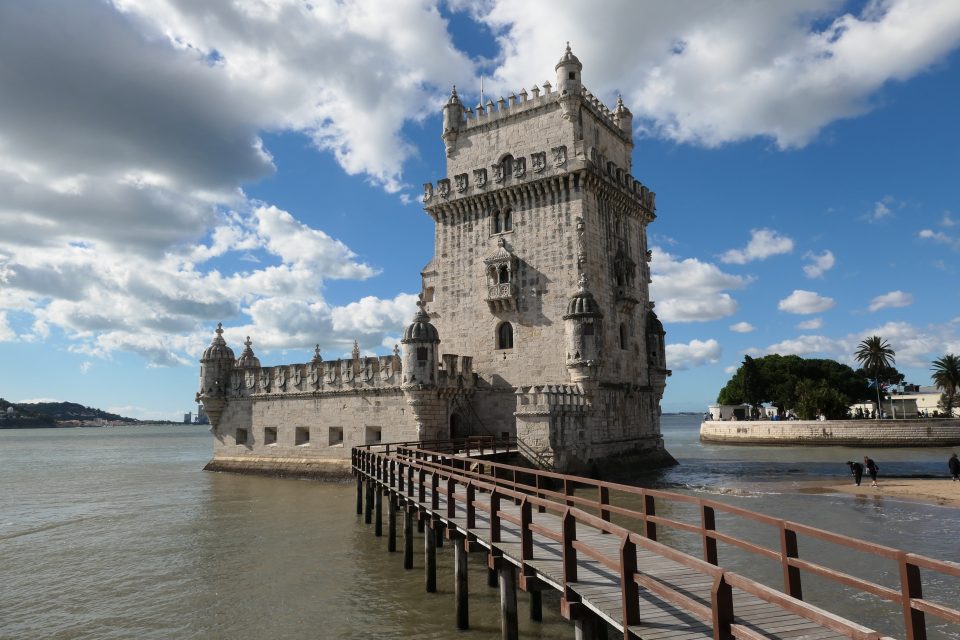
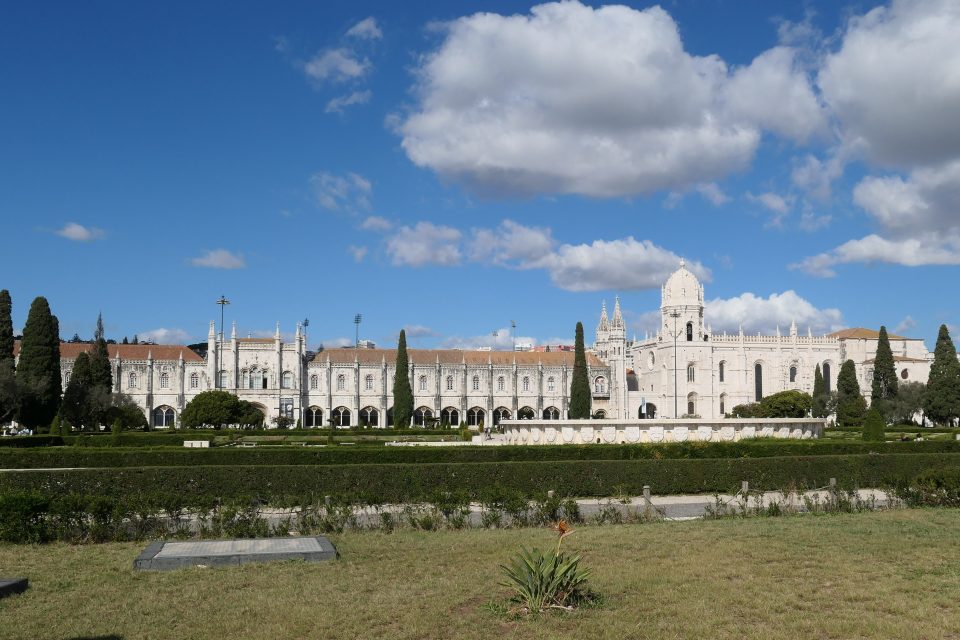
Sounds like a fascinating day even with all the lows